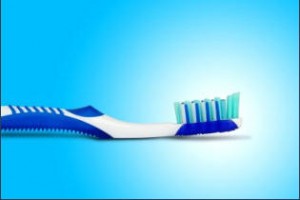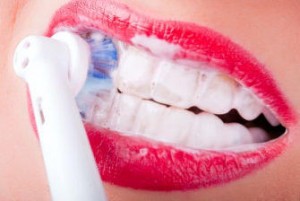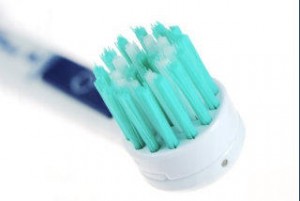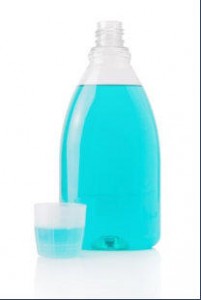Home Care Products
There are many home care products on the market today, but which product to use?
In choosing home care products look for the American Dental Association’s (ADA) Seal of Acceptance.
The American Dental Association has tested and reviewed products as safe and effective.
Get the information you need to make an informed decision about toothpaste, toothbrushes,
mouth rinse and other dental home care products.
Toothpastes
Ask dentist or hygienist about your oral health’s greatest needs. The 
ADA categorizes toothpaste with attributes for controlling bad breath
,gingivitis,tartar,cavities,sensitivity and whitening. Look for toothpaste
which are formulated to help those greatest needs. For example if you
have sensitive teeth choose a desensitizing toothpaste brand. Choose
a toothpaste that contains fluoride. Fluoride is a mineral that occurs
naturally in all water sources. Fluoride toothpaste have been shown to prevent cavities and repair early stages of tooth decay. The American Dental Association recommends that children over 2
years of age and adults use a fluoride toothpaste displaying the ADA Seal of Acceptance.
The final choice is up to your personal preference. Whether your preference is mint or wintergreen
paste or gel, using a toothpaste you like promotes better home care.
Toothbrushes
The most important part of a toothbrush is the bristle. Most dentists 
recommend soft bristles, especially for those people that have
sensitive teeth or gums. Both adults and children should use a tooth
brush that has soft bristles. Toothbrushes with harder bristles are not
more effective at removing plaque but can lead to excessive wear on
teeth and gums. Choose an appropriate toothbrush head size that can
easily fit into the mouth and is capable of brushing one to two teeth at a time.
Select a toothbrush with a very small head for a very young child or infant. Toothbrushes should be replaced about every
three months or earlier if the bristles begin to look worn or frayed (bristles that fan out or spread is a
sign that it is time to get a new toothbrush).
Electric Toothbrushes
Good oral hygiene starts with the correct method of toothbrushing,
but many people have a hard time brushing correctly. For them
the use of a powered toothbrush maybe the answer. Powered tooth
brushes have smaller heads to fit into harder to reach spaces with
faster brush strokes and a timer to brush correctly for the cleanest
teeth possible. Brushing becomes easier for people with medical
conditions that limit manual dexterity such as arthritis,or who are
elderly or physically handicapped, or have oral conditions such as misaligned teeth or teeth with uneven surfaces that make thorough cleaning of all tooth surfaces difficult. They make it easier
to clean teeth with braces and other orthodontic appliances. People may enjoy cleaning their teeth
more since use of a powered toothbrush might be considered more enjoyable and therefore brush
more often as a result. Others might be motivated to brush longer or correctly because of the
investment on purchasing the toothbrush. They remove more plaque and reduce your risks of gingivitis
better than manual toothbrushes. At least one study has shown that the long-term (4 to 6 months)
use of powered toothbrushes produce significant reductions in the amount of dental plaque on the teeth
improving of patients with periodontal disease. The scrubbing effect of powered toothbrushes may
be superior to manual toothbrushes in possibly reducing or even totally removing surface stains on teeth.
Power toothbrushes can even enable you to improve your brushing habits. And most come with
convenient features like a brush head or toothbrush holder,
bathroom-counter storage units and travel toothbrush chargers. Hi-tech features may include:
•Numerous brushing modes specialized for sensitive teeth, whitening benefits or gum-massaging action
•Pressure sensors to signal when you’re brushing too hard
•Timers to help you keep track of how long you’re brushing each quadrant of your mouth
•Digital reminders to replace your brush head
•Oscillating-pulsating and cupping, oscillating-rotating or sonic technology
•Multiple brush head compatibility so you can choose which kind of bristle design you prefer
Which Powered Toothbrush?
Sonic toothbrushes
generate about 30,000 brush strokes per minute 
compared with about 300 per minute with manual tooth brushing.
The bristles in the toothbrush rotate in an up and down motion similar
to manual brushing. Also the sonic speed cleaning action of the brush
directs fluid between teeth and below the gum line to gently remove
plaque.
Electric toothbrushes
generate between 5000 brush strokes per minute. Although
each design differ, the bristles in the brush head are typically either set in a circular format
that rotates or individual tufts of bristles within the brush head spin independently. Some electric tooth
brushes have both a rotating as well as a pulsating motion to help remove plaque and reduce gingivitis.
Mouth rinses
Use mouth rinses to freshen breath, prevent tooth decay, to reduce plaque and 
prevent gingivitis. Basic ingredients include water, alcohol, cleansing agents,
flavoring ingredients and coloring agents.
Active ingredients vary depending on the type of mouth rinse
•Antimicrobial agents reduce bacteria levels to help reduce plaque, decrease
gingivitis and control bad breath.
•Fluoride helps reduce tooth decay by remineralizing the tooth and make teeth
more resistant to decay.
•Astringents can serve as temporary deodorizers that mask bad breath.
•Odor neutralizers act by chemically inactivating odor causing compounds.
Therapeutic mouth rinses can help reduce plaque, gingivitis, cavities and bad breath.
Some fight the bacteria present in plaque, a film that forms on teeth and gums. Plaque that is not
removed with daily brushing and flossing can cause gingivitis, an early stage of gum disease. Plaque can
turn into tartar or calculus, a hard substance that can only be removed during a professional cleaning.
Some therapeutic mouthwashes contain agents that either fight bad breath bacteria or that chemically
inactivate odor causing compounds. Therapeutic mouth rinses that contain fluoride help prevent or reduce
tooth decay. Mouth rinsing helps clean the mouth. but it is not a substitute for brushing or flossing.
If you have difficulty brushing and flossing, a mouth rinse may provide additional protection against cavities
and periodontal (gum) disease. If you must constantly use a mouth rinse or breath freshener to hide
unpleasant mouth odor, visit your dentist to see if there is some underlying cause that can be corrected.
Look for the ADA’s Seal of Acceptance it’s your assurance that the product has been evaluated by
scientific experts for safety and effectiveness and all claims by the manufacturer have been approved
by the ADA.
© 2015 DentalClinic by MatchThemes